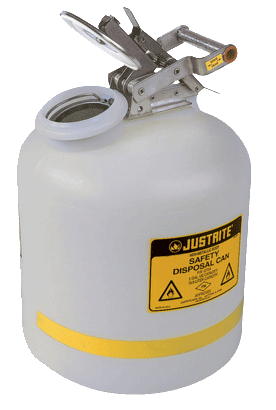How Fluid Garbage Disposal Works: A Comprehensive Overview of Strategies and Technologies Employed

Overview of Liquid Waste Types
The complexity of fluid waste kinds requires a detailed understanding of their attributes and ramifications for disposal. Liquid waste can broadly be categorized into numerous types, consisting of industrial, metropolitan, agricultural, and harmful waste. Each category shows unique residential or commercial properties, requiring particular administration approaches to reduce ecological and health risks.
Industrial liquid waste stems from manufacturing processes and typically has a series of impurities, such as hefty steels, solvents, and natural substances. Local liquid waste, primarily making up wastewater from households and industrial facilities, contains natural matter, nutrients, and virus (industrial wastewater treatment). Agricultural liquid waste, consisting of overflow from ranches, may consist of plant foods, pesticides, and pet waste, presenting dangers to water top quality and ecological communities
Hazardous liquid waste is defined by its toxicity, reactivity, or potential to trigger injury. Understanding these varied fluid waste types is essential for developing reliable disposal methods and ensuring conformity with ecological regulations.
Physical Therapy Approaches

Testing is the first step, where bigger fragments and particles are removed from the fluid waste utilizing displays or grates. In sedimentation tanks, heavier fragments clear up at the base, developing a sludge layer, while the made clear liquid can be additional treated.
Purification is one more important method that involves passing the liquid via porous products, such as sand or membrane layers, to catch smaller sized particles. This action improves the high quality of the fluid, making it suitable for subsequent therapy processes.

Chemical Therapy Techniques
Chemical therapy methods are essential for efficiently taking care of liquid waste, specifically in dealing with liquified and colloidal contaminants that physical approaches may not adequately remove. These strategies utilize various chemical agents to reduce the effects of, speed up, or transform unsafe substances right into less damaging kinds.
One typical approach is coagulation and flocculation, where chemicals such as alum or ferric chloride are included to promote the gathering of put on hold bits. This process improves sedimentation, allowing for easier removal of the resulting sludge. In addition, oxidation processes, employing representatives like chlorine or ozone, are utilized to damage down webpage intricate natural compounds and microorganisms, rendering the waste safer for discharge or additional therapy.
Neutralization is another vital method, which adjusts the pH of acidic or alkaline waste streams to neutral degrees, stopping possible damage to downstream systems and the environment. Furthermore, progressed oxidation procedures (AOPs) make use of combinations of oxidants and ultraviolet light to break down consistent pollutants, attaining a higher level of therapy efficiency.
Biological Therapy Procedures
Biological treatment processes play a critical function in the administration of fluid waste by making use of microbes to disintegrate raw material and minimize contaminant levels. These processes can be broadly classified into anaerobic and aerobic treatments, each using specific microbial communities to attain effective waste deterioration.
Cardiovascular treatment entails the usage of oxygen to assist in the break down of natural products by germs. This process is generally executed in triggered sludge systems, where oygenation containers supply a conducive atmosphere for microbial growth, resulting in the oxidation of organic toxins. The resultant biomass can be separated from other dealt with effluent with sedimentation.
In comparison, anaerobic therapy takes place in the lack of oxygen, counting on various bacteria to break down raw material. This method is specifically advantageous for high-strength waste, as it produces biogas, a renewable resource source, while decreasing sludge manufacturing. Technologies such as anaerobic digesters are often used in local and commercial applications.
Both aerobic and anaerobic biological therapies not only decrease the ecological influence of liquid waste yet additionally assist in resource recuperation, making them necessary components of sustainable waste monitoring approaches. Their effectiveness, performance, and flexibility support their prevalent implementation across numerous fields.
Arising Technologies in Disposal
Ingenious strategies to liquid waste disposal are quickly progressing, driven by developments in technology and an increasing focus on sustainability. Amongst these arising modern technologies, membrane bioreactors (MBRs) have obtained traction for their capability to incorporate organic treatment with membrane layer filtration, leading to high-grade effluent that can be reused in various applications. MBRs allow smaller footprints and more effective operations compared to standard systems.
An additional promising advancement is the use of anaerobic food digestion combined with nutrient healing modern technologies, which not just deals with fluid waste but also produces biogas and recovers important nutrients like nitrogen and phosphorus. This dual advantage improves source performance and lowers environmental effect.
In addition, progressed oxidation processes (AOPs) are being adopted for the deterioration of complex organic pollutants. These approaches use effective oxidants and drivers to damage down pollutants at the molecular degree, using a very reliable remedy for difficult waste streams.
Furthermore, the assimilation of artificial knowledge and maker understanding in waste management systems is maximizing operational efficiency and predictive maintenance, leading to reduced expenses and enhanced ecological conformity. These modern technologies show a considerable change towards more sustainable and effective liquid garbage disposal methods.
Final Thought
In verdict, reliable liquid waste disposal requires a thorough understanding of numerous methods and technologies. By continuously progressing these methodologies, it comes to be possible to resolve the growing difficulties linked with liquid waste, inevitably contributing to ecological defense and resource recovery.
Fluid waste disposal is a crucial aspect of ecological management, requiring a detailed understanding of various methods and innovations customized to different waste kinds. Fluid waste can broadly be categorized right into a number of kinds, consisting of commercial, metropolitan, agricultural, and hazardous waste. Agricultural liquid waste, including continue reading this runoff from farms, might have fertilizers, chemicals, and pet waste, posturing threats to water top quality and environments.
Numerous physical treatment techniques play an important duty in handling liquid waste successfully - industrial wastewater treatment.In final thought, efficient liquid waste disposal necessitates a comprehensive understanding of various strategies and modern technologies